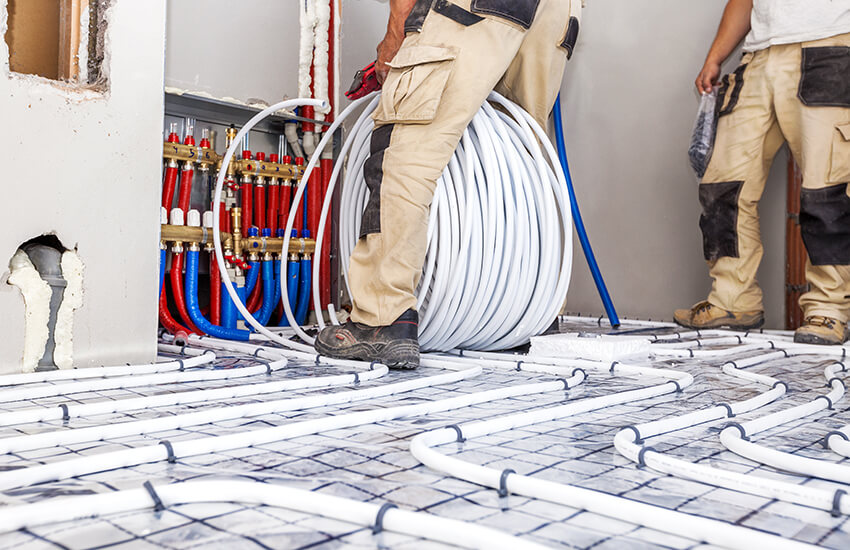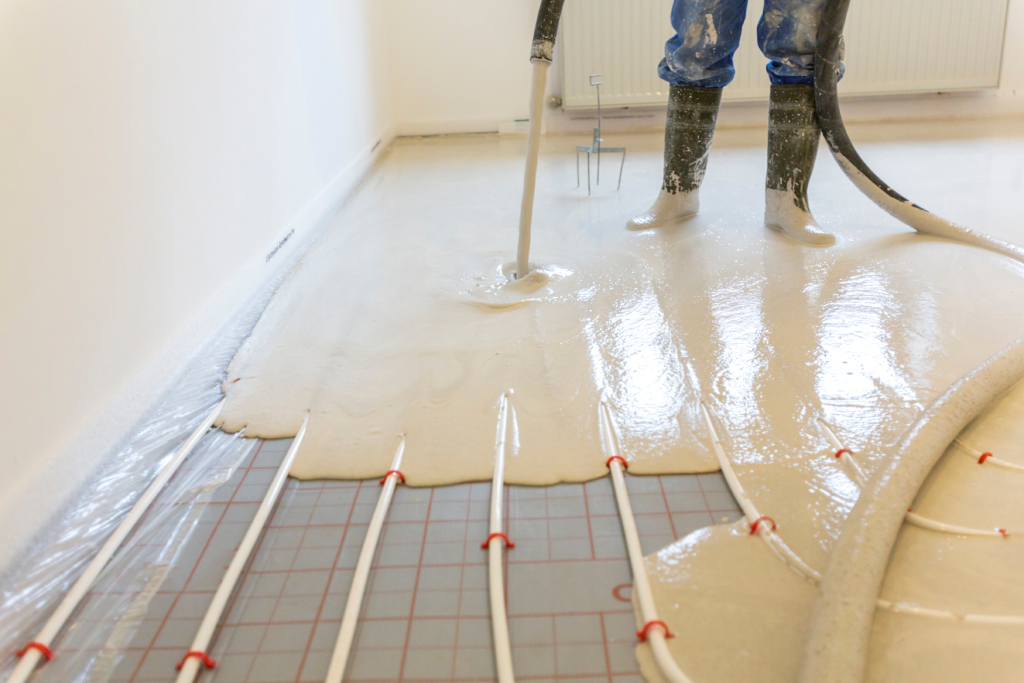
Liquid screed and underfloor heating in Birmingham (UFH) are two cutting-edge technologies that have completely changed how we prepare floors and heat our homes. They have several advantages, such as increased comfort and energy efficiency as well as better floor aesthetics. The characteristics, advantages, installation procedures, and upkeep of liquid screed and underfloor heating systems are examined in this guide.
An Overview of Underfloor Heating
Underfloor heating Birmingham is a contemporary, effective method of heating a house that offers consistent, cosy warmth. Instead of heating the air unevenly and sometimes causing cold spots as typical radiators do, UFH heats the floor directly, guaranteeing a constant temperature throughout the space.
Underfloor Heating System Types
- Electric Underfloor Heating: Under the floor, this system uses cables or mats that are heated by electricity. For smaller spaces or retrofitting existing floors, it is perfect. Electric UFH warms up fast and is simple to install.
- Water-Based Underfloor Heating: Also referred to as hydronic or wet UFH, this system uses a system of pipes installed beneath the floor to circulate warm water. Usually, a heat pump or boiler is linked to it. Larger regions and new construction are more suited for water-based UFH.
Advantages of Underfloor Heating
- Energy Efficiency: Because UFH systems run at lower temperatures than radiators, they use less energy and provide cheaper heating. When used in conjunction with renewable energy sources like heat pumps, they are extremely efficient.
- Comfort: No cold spots or drafts are present in the living space because to the heat’s uniform distribution. Comfort is further enhanced by the heated floor, particularly in kitchens and baths.
- Space Saving: UFH frees up wall and floor space by eliminating the need for large radiators, providing more creative alternatives for interior design.
- Health Benefits: UFH contributes to a healthier indoor environment, particularly for people with respiratory disorders, by reducing the movement of dust and allergens.
Procedure for Installation
UFH installation differs based on the kind of system:
- Electric underfloor heating (UFH): This entails putting heating mats or cables on the subfloor, covering them with tile glue or screed, and then putting the last layer of flooring in place.
- Water-Based UFH: This calls for a more involved procedure that includes putting in a network of pipes, insulation boards, and a layer of screed to cover the pipes. Next, the last layer of flooring is applied on top.
- To guarantee efficiency and stop heat loss, proper insulation is essential. To guarantee that the system is correctly planned and installed, professional installation is advised.
Maintenance of underfloor heating
Underfloor heating (UFH) systems require very little maintenance. Frequent examinations ought to comprise:
- System Inspection: Check for wear or damage on a regular basis on the control unit, thermostats, and any other visible system components.
- Annual Servicing: An expert’s annual service will assist in identifying and address any possible problems with water-based systems early on.
- Liquid Screed Synopsis
- Flow screed, another name for liquid screed in Birmingham, is a contemporary flooring option that offers a level and smooth surface for the final floor covering application. Its superior thermal conductivity and short drying times make it especially well-suited for use with UFH systems.
Liquid Screed Types
- Anhydrite Scabies: This kind of screed, which is made of calcium sulphate (gypsum), is renowned for its outstanding thermal conductivity, smooth finish, and self-leveling qualities. It works perfectly with UFH systems.
- Cement-Based Liquid Screed: While less popular than anhydrite screed, cement-based liquid screed has comparable advantages and is utilised in certain situations where gypsum-based solutions are inappropriate.
Advantages of Liquid Screed
- Efficiency: Liquid screed spreads smoothly and can be poured quickly, saving labour expenses and installation time. Its ability to level itself guarantees an extremely even and smooth surface.
- Thermal Conductivity: Liquid screed is a great option for UFH systems due to its exceptional thermal conductivity, which guarantees effective heat distribution and transfer.
- Strength and Durability: After the liquid screed has dried, it creates a surface that is sturdy and long-lasting, suitable for a variety of floor coverings, such as carpet, laminate, and tiles.
- Minimal Shrinkage: The minimal shrinkage of liquid screed lowers the chance of cracks and guarantees a sturdy, long-lasting floor surface.
- Upkeep of Liquid Screed Surfaces
- Although liquid screed floors require little upkeep, they should be routinely inspected for:
- Surface Integrity: Check for damage or cracks, especially before to putting in the last floor covering.
Moisture Levels: Before installing the last floor covering, make sure the screed has dried completely and reached the appropriate moisture levels to prevent problems like mould growth or adhesive failure.
